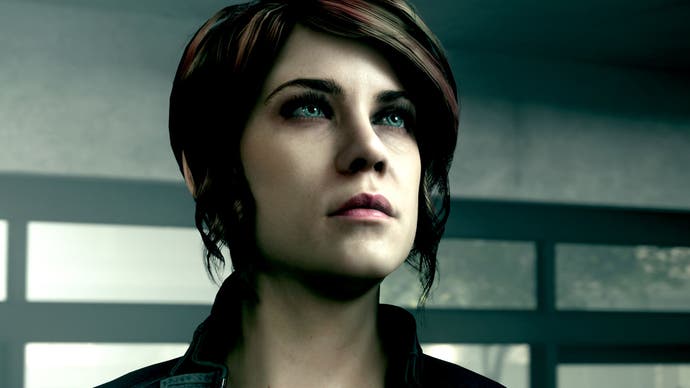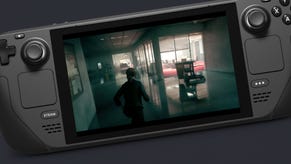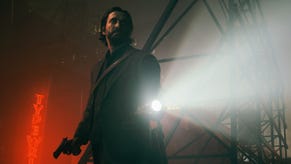A stealth upgrade for Control on PC dramatically improves its visuals
A Remedy dev adds HDR, upgraded RT and DLSS features - and here's how they look.
Remedy's Control has always been a special game for Digital Foundry. Originally released in 2019, the PC version in particular wowed us with its slick destruction physics and groundbreaking ray tracing implementation. The studio has since moved onto new projects like Alan Wake 2, but remarkably one of the developers - Filippo Tarpini - has continued to refine the PC version of the game, adding an excellent implementation of HDR sorely missed in the original release (and the Ultimate Edition upgrade) along with a range of other improvements, including improved fidelity to the already excellent RT, improved texture streaming and a more fully featured DLSS implementation.
The HDR upgrade is the most game-changing improvement, added because Tarpini is such a big fan of the feature. Control always featured a contrast-heavy vidual design, and HDR gives greater local brightness and contrast, rich colour tones without banding errors - and even extra detail resolved owing to the greater dynamic range, along with less blown-out bloom effects. I won't waste too many more words describing this improvement, because we've put together a video captured and mastered in HDR to show the improvement. If you're watching on a standard, non-HDR display, you'll get a tonemapped presentation - but what surprised me is that the difference can still be seen to a certain degree.
Beyond just showing comparisons of the differences offered by native HDR, I want to comment subjectively how it amps up the game's visuals. Given how many striking scenes there are with great colour and darkness contrast, it is nice to have HDR preserving that local variation in the scene, so it does not look as monochrome as it did before. I vastly prefer the HDR look to the 'raised grey' aesthetic you might be used to, but for those who prefer the original look, Tarpini has even included this an option in the modded version of the game. So you get HDR's brightness, but with the more monochrome look from the original release. There are other tweakables to play with too, including the ability to tweak the brightness of UI elements - which may resolve with a piercing intensity otherwise.
Beyond HDR support, other improvements are added to the mod too. The original Control's ray tracing used usually one sample per pixel for most effects. With the mod set to ultra RT, this is ramped up to multiple rays per pixel. For rough reflections, this means they retain their brightness level and true shape much better, looking fuller and the amount of noise is greatly reduced when using something like DLSS. All ray-traced effects now should look more stable at ultra over the old high, but it is usually most noticeable in the brightest reflections that are caught at grazing angles.
That ultra setting also increases the resolution of volumetric effects, which looked good before but look a touch better now with less aliasing, but this setting particularly helps the shading of glass which also seems to be tied to the volumetric lighting - thus scaling their quality to the much powerful GPU hardware we have access to these days.
Another advantage from the new patch is how texture loading is done via a higher texture streaming quality setting. Even on ultra in the old game, just running through the world could cause textures to load in late, visibly flipping in quality. With the new max texture streaming quality option, this behaviour appears to be nearly completely eliminated. Once again just another smaller tweak to make the game scale much higher for current gen GPUs.
Further tweaks target improved image quality, first of all with improved texture quality with DLSS enabled. With the mod, the mipmap for textures is scaled correctly with the output resolution, whereas before only the texture streamer itself was biased. That means in certain scenarios, textures at a distance are of a much higher quality. On top of that, DLAA support is implemented, which is best described as DLSS running at native - rather than internally sub-native - resolutions. This is great as it produces better quality than the existing TAA solution in many areas, along with reduced ghosting. There are a few other nips and tucks as well, such as how film grain now displays correctly with DLSS on - whereas before it essentially disappeared.
In general, we are looking at iterative improvements to just make the visual experience more polished with fewer visible artefacts - but Tarpini is still working on improvements. For example, an issue we saw with ultra RT reflections was quickly corrected. Either way, these nice iterative quality improvements do have a cost. For the new ultra ray tracing setting, there are big performance hits from using it, even on a big GPU. We're looking at a 30 to 40 percent drop to performance. Interestingly, DLAA has little performance impact - it costs nearly the same as standard TAA, while looking a lot better.
Ultimately though, this mod is well worth a look, even if it is technically unfinished. What's clear to me is that with the features it possesses and the care and attention put into creating it, it's effectively an unofficial patch - the quality is certainly there. It enhances Control in many meaningful ways so that it scales into the future for the much more powerful PCs to come, while delivering a range of decent improvements for today's hardware. Fancy giving it a look? Grab the mod here.











